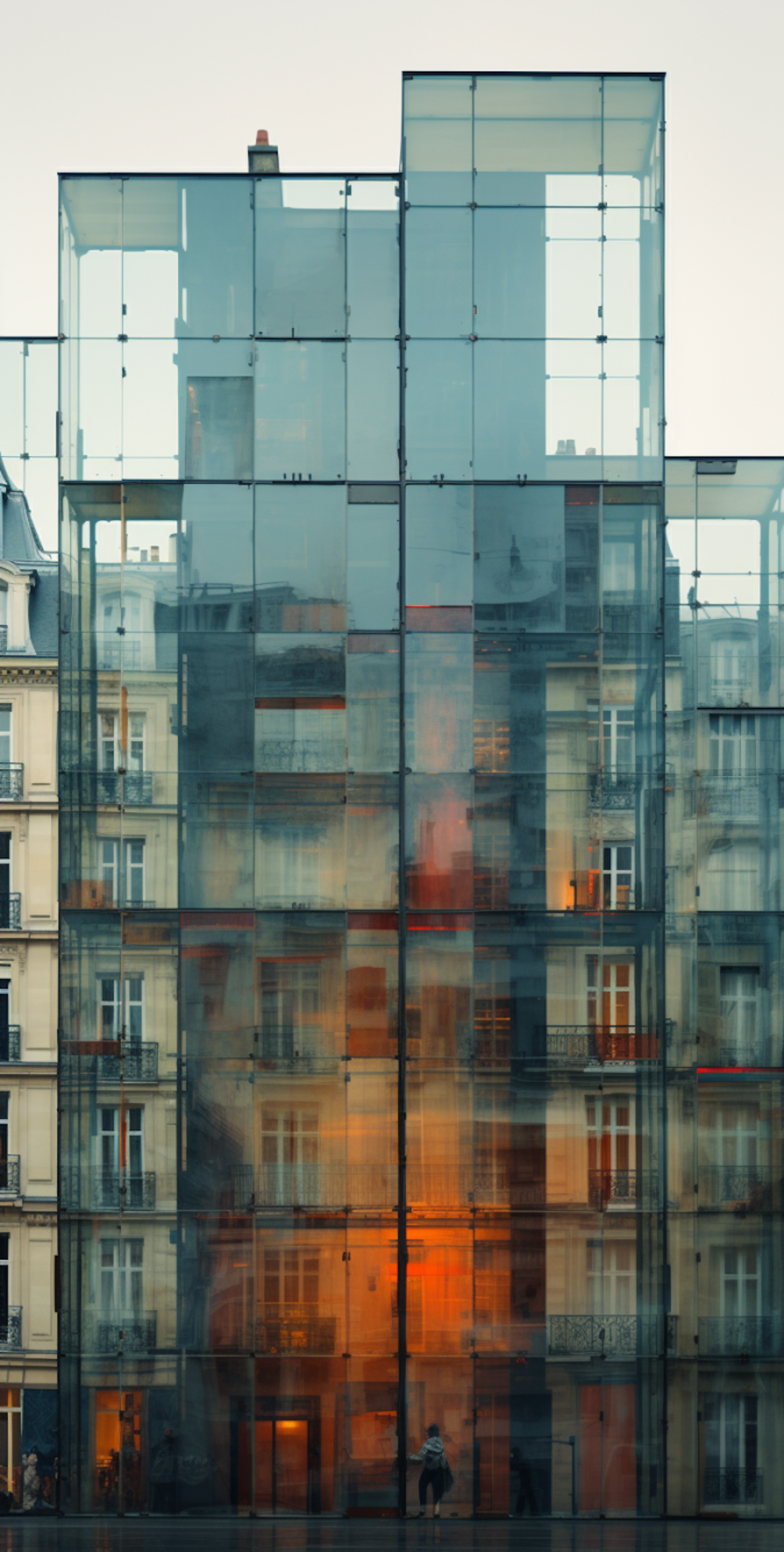
Parisian Tapestry: A Fusion of Time through Glass
Modern glass building with reflections of classic architecture, warm interior lights, and people at the base, blending old and new styles.
Modern glass building with reflections of classic architecture, warm interior lights, and people at the base, blending old and new styles.
167
Views
46
Downloads
5
Collected